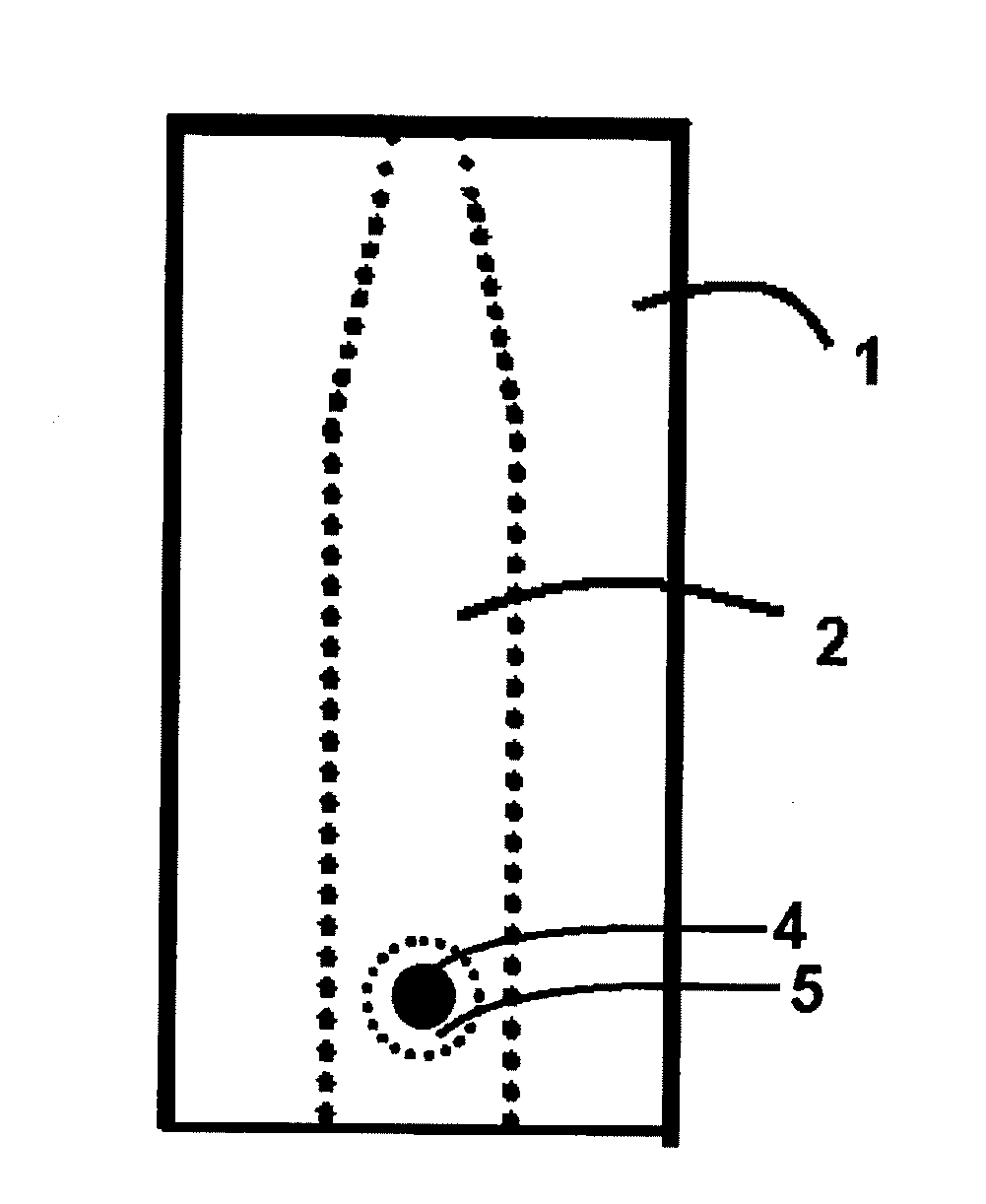Microwave antenna applicator
a microwave antenna and microwave technology, applied in the field of open-ended frequency broadband microwave applicators, can solve the problems of low coupling factor, low power efficiency, and inability to use such systems with multiple antennas for signal detection across an ous consisting of e.g. a female breast, and achieves a wide range of beam width, less and reduced sidelobe and surface wave excitation.
- Summary
- Abstract
- Description
- Claims
- Application Information
AI Technical Summary
Benefits of technology
Problems solved by technology
Method used
Image
Examples
first embodiment
[0038]The function of the permittivity quotient of about ½ between the surrounding dielectric 1 and the higher-ε′ insert 2 and its shape is now described, in terms of electric field (E) geometry. At the opening of a constant cross section ridged waveguide with homogeneous filling, the E field wavefront will no longer be plane but be bulging outwards. This will strongly contribute to nearfield creation, i.e. fields no longer being parallel to the OUS surface. If, however, there is a filling in the ridge with higher ε′ than its surrounding, the central part of the wavefront will become somewhat retarded due to the general phenomenon of slower speed of propagation in higher-e′ substances. This will result in a more plane-like wavefront being created and thus in turn less nearfied excitation; this constitutes the invention.
second embodiment
[0039]A further and second embodiment of the invention is that the front end part of the insert 2 is foursided frustrum pyramidal in only the wide (TE10 waveguide a) direction. The end tip width can be as shown in FIGS. 2 and 4. The length of this frustrum pyramid in the direction of wave propagation is typically in the order shown on FIGS. 2 and 3, i.e. in the order of the overall waveguide a dimension, and is for providing better impedance relationships in the varying cross section part, and for avoiding a too strong concentration of field energy to the ridge end facing the OUS.
[0040]As not shown in FIGS. 2, 3 and 4 a further embodiment is not to let the ceramic insert go all the way to the antenna opening. Positive reasons for this are that the field pattern will be smoother at the opening and thus reduce very local nearfield effects, and that a continuous material at the opening will provide better mechanical sealing. However, this distance should be small—in the order of 1 mm o...
PUM
 Login to View More
Login to View More Abstract
Description
Claims
Application Information
 Login to View More
Login to View More - R&D
- Intellectual Property
- Life Sciences
- Materials
- Tech Scout
- Unparalleled Data Quality
- Higher Quality Content
- 60% Fewer Hallucinations
Browse by: Latest US Patents, China's latest patents, Technical Efficacy Thesaurus, Application Domain, Technology Topic, Popular Technical Reports.
© 2025 PatSnap. All rights reserved.Legal|Privacy policy|Modern Slavery Act Transparency Statement|Sitemap|About US| Contact US: help@patsnap.com



